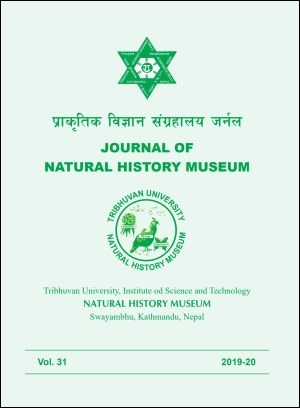Floristic Diversity in the Lake Cluster of Pokhara Valley, Central Nepal
DOI:
https://doi.org/10.3126/jnhm.v31i1.39371Keywords:
invasive alien species, Ramsar site, Raunkiaer's life form, wetland floraAbstract
Wetlands support exceptionally high biodiversity and provide valuable ecosystem services, yet they are among the most threatened habitats due to anthropogenic activities. Conservation and management planning of wetlands requires, among others, a comprehensive floristic account. In this study, we prepared a checklist of the flowering plants found in the wetlands of the Lake Cluster of Pokhara Valley (LCPV), a Ramsar site of Nepal, located in a rapidly urbanizing capital city of Gandaki Province in Central Nepal. Voucher specimens were collected from the study sites through multiple visits during the monsoon (June-August) and autumn (September-November) seasons. Species were categorized based on their life forms (Raunkiaer’s classification) and native distribution range (native, naturalized, invasive). Ethno-botanical uses of the plant species were compiled from the published literature. We identified 230 plant species belonging to 70 families and 177 genera. Asteraceae (25 species), Poaceae (22 species), Fabaceae (18 species), Cyperaceae (16 species), and Lamiaceae (11 species) were species-rich families. Therophytes (30%) were the dominant life form followed by Hemicryptophytes (27%). Among 230 species, 183 species were native and 47 species naturalized; among the naturalized species, 21 species were invasive. Most of the plant species (61%) have medicinal values while others have food (24%) and fodder values (13%).

